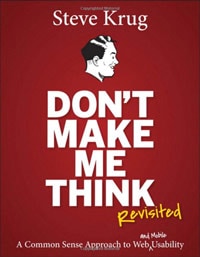The Psychology Behind Successful Web Design
Stepping into the world of web design brings a confluence of technology and artistry, the ability to make something that is both aesthetically appealing and functionally seamless. But the secret recipe of successful web design doesn’t stop there. The is some psychology behind successful Web Design.
It delves deeper, tapping into the realm of human psychology, understanding how the mind works, what catches its attention, and what keeps it engaged. This intricate relationship between psychology and web design forms the bedrock of this discourse.
It might not seem apparent, but the most successful web designs are those that differentiate themselves from the competition, but also have truly understood the minds of their visitors and used it to their advantage.
In essence, this article aims to offer an in-depth understanding of the psychology behind successful web design. You’ll discover why certain designs, colours, and layouts appeal more to users, how the mind processes information on a webpage and the cognitive biases that can be leveraged to boost user engagement and conversion.
This knowledge will be instrumental in creating web designs that are not just visually captivating but are intuitively navigable, encouraging the desired actions from visitors.
Now, let’s unravel the psychological intricacies behind successful web design and how to harness them effectively.

Colour Psychology in Web Design
Effective web design isn’t just about creating an aesthetically pleasing interface. It’s about empathising with users, understanding their needs and their emotions.
The choice of colours plays a crucial role in the success of web design, as colours have the power to evoke specific emotions in users. Research shows that users form an opinion about a website within 50 milliseconds, and colour contributes to this initial judgement.
Hence, understanding colour psychology becomes integral to web design, allowing designers to create a visual hierarchy, guide users’ attention, and provoke the desired emotional responses.
Each colour has the power to evoke certain emotions or reactions, shaping how users perceive a brand.
Blue, for instance, often creates feelings of trust and security, while red can convey energy and urgency. Green is often associated with nature and calm.
By understanding the psychology of colour, designers can make informed choices to evoke desired emotions and guide user actions.
Keep it Simple – Don’t make me think!
Another key psychological aspect behind successful web design is Hick’s Law, which states that the time it takes for an individual to make a decision increases with the number of possible choices.
In the realm of web design, this implies a necessity for simplicity and clarity.
Check out the book, ‘Don’t Make Me Think‘, by Steve Krug

Overloading a website with too many options can lead to choice paralysis, hindering user engagement and conversion.
At the heart of these psychological principles lies the concept of cognitive load, which refers to the amount of information that the working memory can hold at once. An effective web design strives to minimise cognitive load, providing information in an easy-to-digest manner.
This can be achieved through techniques like chunking, where information is broken down into smaller, manageable units, and progressive disclosure, where information is revealed gradually, based on the user’s interaction.

Cognitive Psychology and Web Design Success
The success of web design is heavily influenced by cognitive psychology, a branch of psychology that studies mental processes such as “perception, thinking, memory, and language”.
Cognitive psychology helps web designers understand how users perceive, learn, and make decisions online, thereby enabling them to create user-friendly websites that cater to these mental processes.
A cornerstone of cognitive psychology in web design is the understanding of how users perceive and process information. Humans tend to scan information in an ‘F’ or ‘Z’ pattern, meaning that they pay more attention to information at the top and left side of the screen.
By placing key content or call-to-action buttons along these ‘F’ or ‘Z’ patterns, web designers can capture and hold user attention effectively.
In addition, cognitive psychology sheds light on the influence of emotions on user behaviour. Emotionally-driven design can enhance user engagement and influence decision-making.
By incorporating elements that evoke positive emotions, like using attractive images or relatable stories, designers can establish a strong emotional connection with users, which can ultimately drive conversion rates.
Understanding cognitive biases, such as the Anchoring Effect or the FOMO (Fear of Missing Out), allows designers to create persuasive designs that encourage desired user actions.
For example, displaying a higher “original” price next to a sale price can make the discount seem more attractive (Anchoring Effect), or showing limited stock or time left can create a sense of urgency to buy (FOMO).
In essence, cognitive psychology provides valuable insights into how users interact with websites, guiding designers to create successful web designs that are intuitive, engaging, and user-friendly.

Psychology in Page Layout
The success of a web design project is not all about SEO. It often hinges upon the nuanced understanding of human psychology. It’s the knowledge of how users think, behave, and interact with a digital environment that sets apart an average web design from an effective one.
The process of unmasking the psychology behind effective web design revolves around the principles of cognition, visual perception, and emotional response.
Every time a user visits a website, they are embarking on a journey of discovery. Their attention is governed by the Gestalt Principles, a fundamental aspect of human visual perception, that says humans perceive visual elements in groups, not in isolation.
When users see a webpage, they don’t view it as a collection of different parts but rather as a unified whole. This understanding guides the process of website layout planning, ensuring that the design elements are grouped in a way that delivers a coherent and intuitive user experience.
This means that related items should be placed close to each other to aid user understanding and navigation. For instance, grouping form fields or menu items together can improve usability and user satisfaction.
Moreover, Fitts’s Law, which asserts that the time required to move the mouse to a target depends on the size of the target and its distance, underpins the importance of design elements like size and positioning of the call-to-action buttons.
Another key principle is the Law of Prägnanz. This law suggests that people prefer to see objects in their simplest form. In web design, this means avoiding unnecessary complexity and striving for simplicity and clarity. This can be achieved through clean lines, ample white space, and a balance between text and visuals.
Principles such as the Von Restorff Effect or the Isolation Effect state that when multiple similar objects are present, the one that differs from the rest is most likely to be remembered. Utilising this principle can help highlight key elements of a website, like call-to-actions or promotional banners.
In addition, the principles of contrast and emphasis are key tools in directing user attention. Contrast helps certain elements stand out, guiding users towards key actions or goals, while emphasis can be used to highlight important information or calls-to-action.
The psychology of shapes is one facet that holds significant influence over how a design is perceived.
Circles, for instance, tend to be associated with harmony and completeness, while squares and rectangles suggest stability and balance. Understanding this allows designers to use shapes strategically to convey a brand’s message and personality.
A key psychological factor is the use of visual hierarchy. Humans naturally notice big, bold elements first. It dictates that elements with higher importance should be more dominant and easier to notice.
By manipulating size, colour, and positioning, designers can guide users’ attention to the most important information or actions on a page, effectively guiding the user journey.
The use of white space is another psychological aspect often overlooked. Not every inch of a website needs to be filled with content. The judicious use of white space, the empty areas around and between design elements, can help reduce cognitive load (remember the ‘Don’t make me think rule?)
Dare to be different?
After many years of using the internet, human brains typically expect certain page elements to be in the ‘typical’ places. Users should be able to understand and navigate a site easily.
It is typical that the logo is placed in the top left corner of the webpage and clicking it should take them back to the homepage. Elements like menus and contact details perhaps at the top of the page.
This is one of the principle of consistency — the human inclination towards familiar patterns and predictable outcomes — is a vital part of creating user-friendly interfaces.
Cognitive psychology also emphasises the importance of mental models — the assumptions and predictions people make based on their past experiences. Web designers can capitalise on these mental models to create websites that meet user expectations.
By sticking to usual conventions, designers can create an intuitive experience for users, thereby reducing the learning curve and enhancing user satisfaction.

Storytelling, Motivation and Social Proof
The power of storytelling also draws on psychology. Humans are hardwired for stories — they captivate attention, evoke emotions, and make information more memorable. By incorporating storytelling into web design, designers can create a more engaging and memorable user experience.
Understanding user motivation is crucial for superior web design. The Self-Determination Theory suggests that humans are motivated by a need for competence, autonomy, and relatedness. By catering to these needs, designers can create websites that motivate users to engage, explore, and take desired actions.
Social proof, the idea that people are influenced by what others do or think, can be leveraged effectively in web design. Including elements like reviews, testimonials, and user counts can create a sense of community and trust, encouraging visitors to take desired actions.
The Principle of Reciprocity is also influential in web design. This principle suggests that people feel compelled to return a favour. In web design, this could mean offering valuable content or features to users for free, with the expectation that they might reciprocate by making a purchase, signing up for a newsletter, or sharing content.
Additionally, the psychology of trust plays a pivotal role in web design. Users need to feel safe and secure when interacting with a website, particularly if it involves sharing personal data or making a purchase. Design elements such as secure payment badges, transparent privacy policies, and easy-to-find contact information can help build trust.
FAQ’s
Why is psychology important in web design?
Psychology offers valuable insight into how users behave, think and make decisions, making it an essential aspect of web design. By understanding and catering to users’ subconscious needs and expectations, designers can create intuitive and engaging interfaces, ultimately increasing user engagement and driving higher conversion rates.
How does colour psychology impact web design?
Colour can evoke different emotions and elicit various responses from users. For instance, blue can create a sense of trust, while red may convey urgency. By understanding these emotional associations, web designers can choose colours that enhance the user experience and guide user behaviour in desired ways.
What is cognitive load in web design?
Cognitive load refers to the mental effort users need to use and understand a website. Overly complex designs or excessive information can overwhelm users, reducing engagement. To keep cognitive load minimal, designers aim for simplicity, clarity, and familiarity in their designs.
How does scarcity influence user behaviour in web design?
The psychological principle of scarcity plays on the fear of missing out, driving users to act quickly. Web design can harness this principle by showcasing limited-time offers or indicating low stock levels, creating a sense of urgency that can drive conversions.
What is social proof in web design?
Social proof is the tendency of people to follow the actions and decisions of others. In web design, social proof can be demonstrated through elements like user reviews, testimonials, or popularity counters. These features can lend credibility to a website and encourage more user interaction.
How can psychology improve user experience in web design?
By understanding and applying psychological principles like cognitive load, colour psychology, and social proof, designers can create interfaces that are more aligned with user expectations and behavioural tendencies. This can result in a more intuitive, user-friendly experience, leading to improved user satisfaction and engagement.
What role does trust play in web design?
Trust is a critical factor in web design, especially for websites handling sensitive personal or financial data. Trust can be built through professional design, transparent and easily accessible policies, and clear, readily available contact information.
How do psychological principles impact conversion rates in web design?
Psychological principles can significantly influence user behaviour and decision-making. For example, the principle of scarcity can induce a sense of urgency, leading to increased conversions. Likewise, social proof can boost credibility, driving more user interaction and conversions.
How can web designers apply the principle of cognitive fluency?
Cognitive fluency is the ease with which information is processed. In web design, this principle can be applied by maintaining simplicity, using familiar patterns, and providing clear, concise content. This leads to a more enjoyable and engaging user experience.
Why is the principle of reciprocity used in web design?
The principle of reciprocity suggests that people are inclined to return a favour. In web design, this principle can be leveraged by offering users something valuable, like free content or a trial service. In return, users may be more inclined to give something back, such as their contact information or a social media share.
Conclusion
Web design is more than just creating a visually pleasing website. It’s an intricate blend of art and psychology, designed to understand and cater to the needs, desires, and behaviours of users.
Understanding and applying psychological principles in web design can greatly enhance the effectiveness of a website. It helps create designs that not only look good but also resonate with users, foster trust, and drive desired actions.
Web design is not just a fusion of creativity and technical skills; it’s a practice rooted in the understanding of human behaviour. By exploring the role of psychology in web design, one can craft more user-centric designs that deliver better user experiences and achieve business objectives more effectively.
Drawing upon the nuances of psychology in web design, h2o digital shapes digital platforms that are engaging, intuitive, and primed for success. Each project is treated as a unique endeavour, infused with a deep understanding of your target audience, their needs, and their online behaviour.
Beyond mere aesthetics, the team at h2o digital crafts each website to cater to the psyche of its users, subtly guiding them towards the desired action, be it making a purchase, signing up for a newsletter, or making an enquiry.
h2o digital ensures your website is as straightforward and user-friendly as possible. Every element, every page, and every process is designed with the user’s ease in mind. Simplified navigation, clear instructions, and intuitive design reduce user frustration and improve overall engagement.
In the modern digital landscape, trustworthiness is a currency. Recognising this, h2o digital emphasises transparency, security, and reliability in every design, helping you foster a bond of trust with your users.
Get In Touch and see how we can help with your next web design project!






